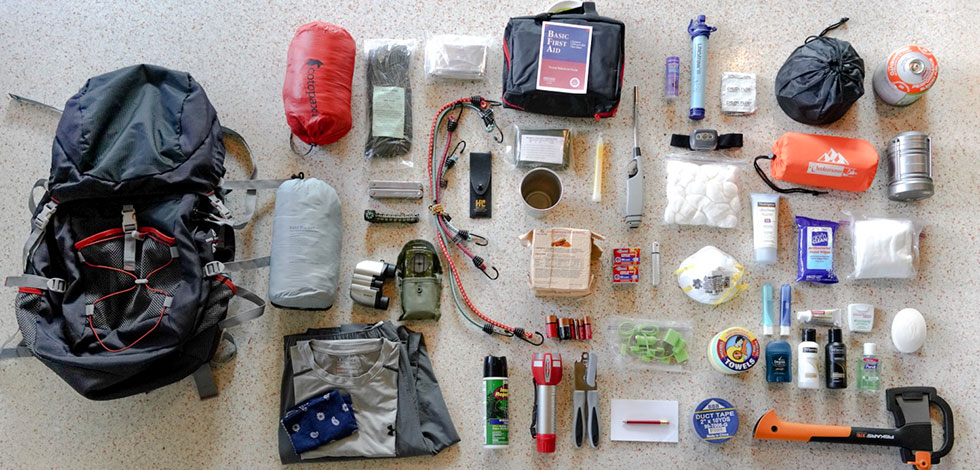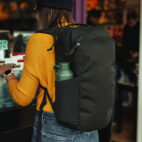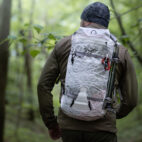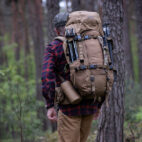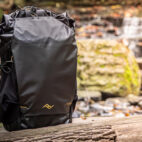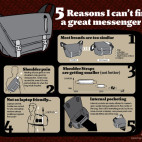What’s In My Bug Out Bag Backpack?
Over 10 years, Jovanni Bello, researched, built, and slowly tweaked his Go Bag. Here’s how it ended up!
In 2009 I was recently married and picked up a book called “Emergency” by Neil Strauss. This book opened my eyes to several survival and preparedness steps I should have been taking to protect myself and my new family. One of the most seemingly attainable steps was to create a “Bug Out Bag;” little did I know the rabbit hole I was about to fall into headfirst.
Disclaimer: Bug out bags are tremendously personal, and there are a lot of strong opinions on the subject.
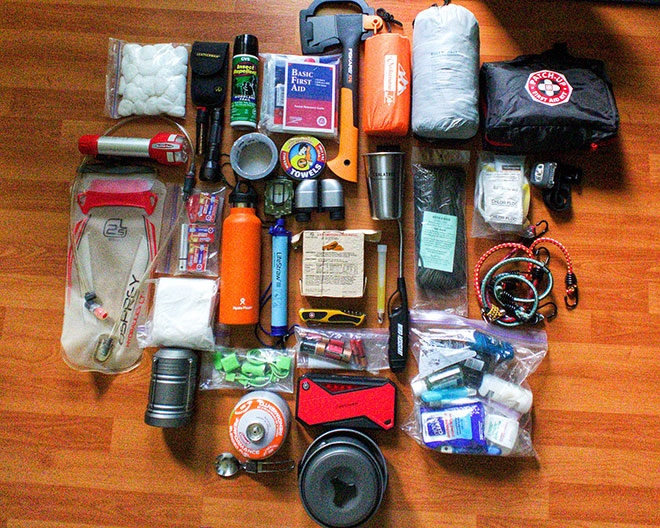
What is a bug out bag, and why? Definitions and purposes abound, but this is the best explanation based on my knowledge: A bug out bag, which can also be called a survival bag, or go bag, is intended to be a central repository of gear that you can quickly grab and escape a potentially dangerous situation. This gear should sustain you and loved ones without any other assistance. They can be used for such mundane situations as hurricane or earthquake preparedness, to the more extreme terrorist strike or marshal law scenarios.
Over the last ten years, I’ve put together a bug out bag from scratch; tweaking and tuning as expectations, skill set and comfort levels have changed. Below you’ll find what pack I chose and what’s inside, including my rationales.
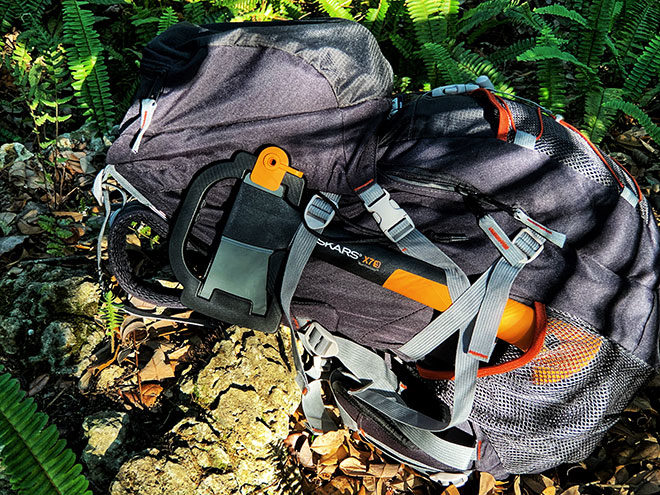
The bag itself: An evolution
Right off the bat, I knew I wanted to create my own kit. I started by using an army surplus bag with an external metal frame. This thing was sturdy and heavy, and outright unwieldy. I was able to put everything I wanted inside, and it would surely survive any disaster, but at the same time it was cumbersome and took up a lot of space.
I moved on to a military-style Molex bag. This one was smaller and offered enough storage space for all my gear, but in the end, it was a tight fit and didn’t offer enough room to add miscellaneous items later. I was also concerned that aesthetically I was painting a giant target on myself as someone who had quality gear worth stealing.
I finally landed on a JanSport Big Bear 63. Why? This bag is massive, with 63L of storage space, a sturdy internal frame, plus hooks for more gear on the exterior if need be. Excellent organization with thoughtful compartments, webbing, and pockets. It’s incredibly comfortable, with beefy shoulder straps, a hip belt, and sternum strap. It has a muted aesthetic that doesn’t scream “rob me!” And lastly, it’s relatively inexpensive.
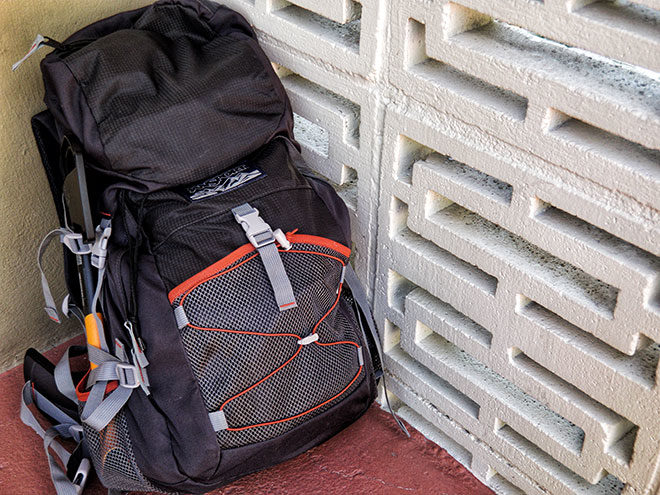
Unfortunately, the Big Bear has been discontinued by JanSport, replaced by either the Klamath 55, or the Katahdin 70L. Nevertheless, the rationale behind my choice holds true irrelevant of brand or series.
Why do I share this? To show that there are options, things to consider and that there is no one singular way to do it. Also, the hope is never to use this bag, so it’s okay not to go all out and get the most expensive pack, or trendiest survival carry.
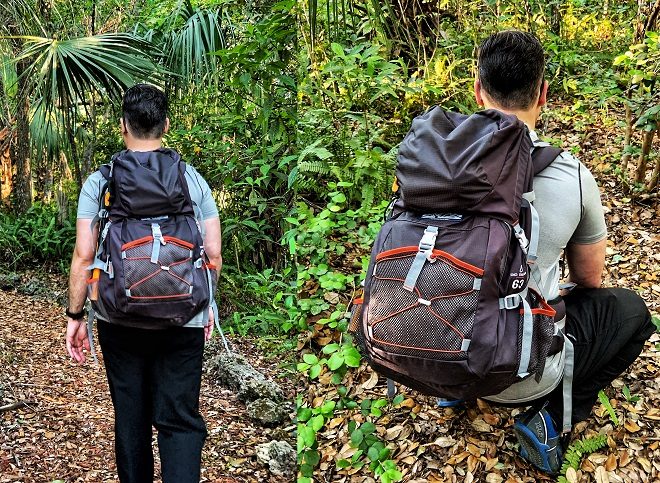
The Contents
From here on out, I’ll guide you through what I’ve put in my go bag – to give you an example of what to consider, and what you too can add to your pack. As a resident of Miami, my environment is urban/coastal.
Water
Clean drinking water is one of the most fundamental and crucial aspects of survival – we can last a bit without food, not very long without shelter, and barely any time without water.
I first began by stuffing about three days’ worth of Mainstay Emergency Water packs. Sure, it’s storable water that’s ready to drink, but they were heavy and took up way too much space. I kept this setup for a couple of years, but then decided I needed to lighten my load and make room for other items. That’s when I changed my mindset; instead of carrying water with me, I’d keep methods of acquiring water instead. This setup minimizes weight on my back while maximizing my capacity to acquire water from various sources:
· Hydro Flask Water Bottle
· Sawyer Mini Water Filter System
· Chlor-Floc Water Purification Tablets
· Bivvy bag – Utilized to capture rainwater
% of Pack: 15%
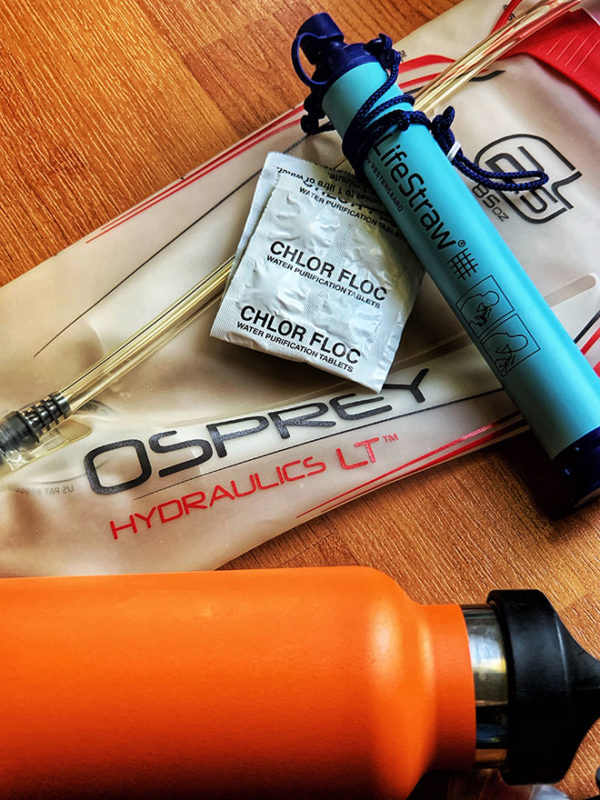
Food
As you make your way to safety or are waiting to be rescued, you’ll need calories, and these calories can come from all sorts of sources. If you’re adept at hunting, trapping, fishing, or foraging, you increase your food supply exponentially. In the meantime though, you’ll want to have something on hand that won’t require a significant calorie expenditure to acquire.
A lot of folks immediately go to Military MREs (Meals Ready to Eat). These come in varying forms, but generally, they are vacuum-sealed pouches that contain a full meal that can be eaten with a utensil. They can be eaten cold, or you can cook them using a small stove, while some come with self-heating packs. You’ll feel like you ate a full meal of real food: turkey chili, cheese tortellini, spaghetti, hashbrown potatoes, beef brisket, etc. The problem with MREs is that they’re bulky and heavy in comparison to other options, but hey, you just ate a plate of pasta with a side of crackers and an apple turnover; that’s the trade-off.
Others go for freeze-dried MREs in smaller pouches; Mountain House is a significant player in this space, with loads of satisfied customers. If you follow the directions and use boiling water, you’ll get a surprisingly tasty meal. If you can’t get a boil going and just use water, it won’t be great, but you’ll get the sustenance you need. Like the military MREs, these take up a bit of space, but you’re still having a full meal.
I decided to go with S.O.S. Emergency Food Rations (Mainstay are also good). Why? Each vacuum-sealed pack is made to feed one person three days; nine bars in total, three bars per day. Each bar is about 400 calories. Sure, you’re not eating a full meal of pasta, but these things will keep you satiated on the go while taking up a relatively small amount of space. Because of their size and weight, I keep two in my bag – and with a five-year shelf life, I don’t have to think about it much.
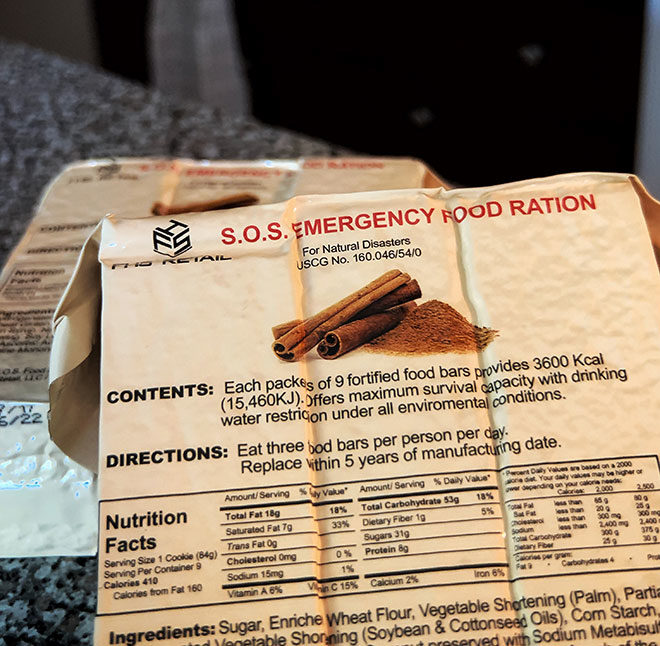
For me, the amount of space taken up by food was a significant factor in deciding which route to take between:
· Military MREs
· Mountain House Freeze-dried MREs
· S.O.S. (or Mainstay) Emergency Food Rations
And
· Quest Protein Bars – As a snack.
In the end, rations won out due to their size, and because although not a complete meal, they taste like shortbread cookies, and I am okay with that!
Don’t forget to pack a few essentials to make your eating experience better:
· Jetboil isobutane stove – They can be a little pricey, but they pack a punch and are reliable.
· Eating Utensils – Stainless steel or titanium will do.
% of Pack: 15%
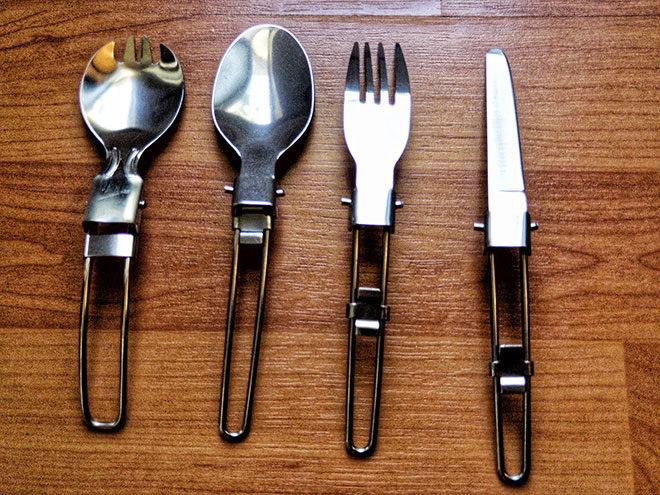
Fire
Irrelevant of which environment you intend to bug out to, or hunker down in, fire is essential. Not only for providing light, cooking food, keeping you warm, and warding off predators; sitting by a friendly fire boosts morale, providing a sense of calm and tranquility that will allow you to think clearly. Knowing how to produce a flame without the use of modern fire-starting materials is truly valuable. Nevertheless, you want to be prepared and have some gear on hand to assist.
My kit includes four methods of starting fires:
· Storm-proof Matches
· Magnesium or Ferrocerium Rod
· Wind-proof Lighter
· Magnifying glass
Additionally, I carry a pouch of cotton balls and twine for use as tinder.
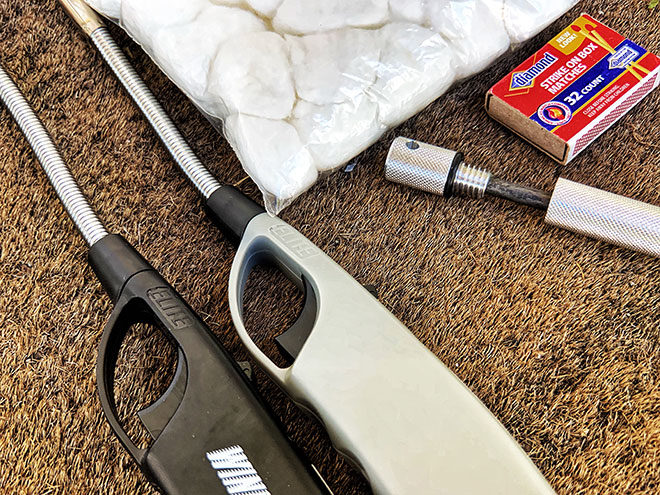
Matches and lighters are no-brainers and readily understood, but using a magnesium or ferrocerium rod may be foreign to you. Generally, you will strike the rod with a sharp object at an angle, either a knife or a built-in striker. The strike will result in a spark that can light a cotton ball, twine, tinder, etc. If you’re not used to this method, be sure to practice a few times to get familiar.
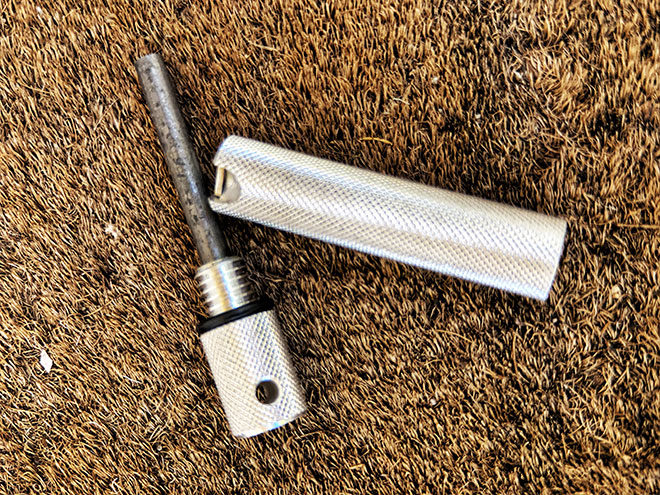
Lastly, if you live in a sunny place, a magnifying glass can also be used to light the same flammable materials. It may take a little longer, but it’s an option. Still, nothing can replace the real world know-how of being able to build a fire using nothing but the material around you.
% of Pack: 5%
Utility/Protection
With some basics out of the way, you’ll want to be sure to pack tools. I personally carry:
· Leatherman Core – Comes with 19 tools. A multi-tool should have a minimum of pliers, scissors, screwdrivers, and knife.
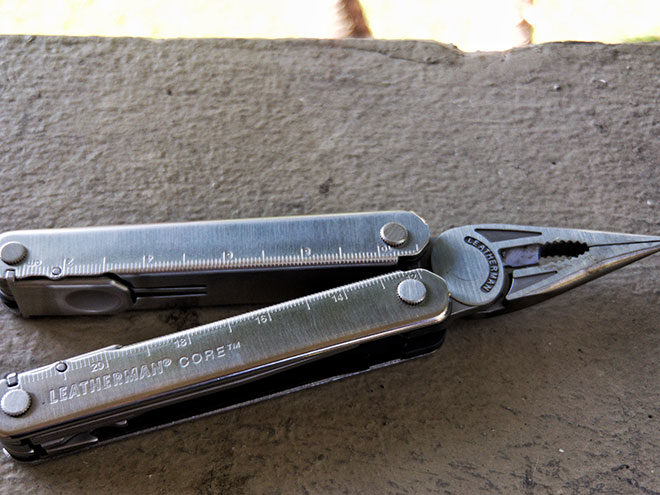
· Victorinox Rangergrip Boatsman – Has an excellent and superbly sharp blade. It’s also high-vis yellow, making it hard to lose.
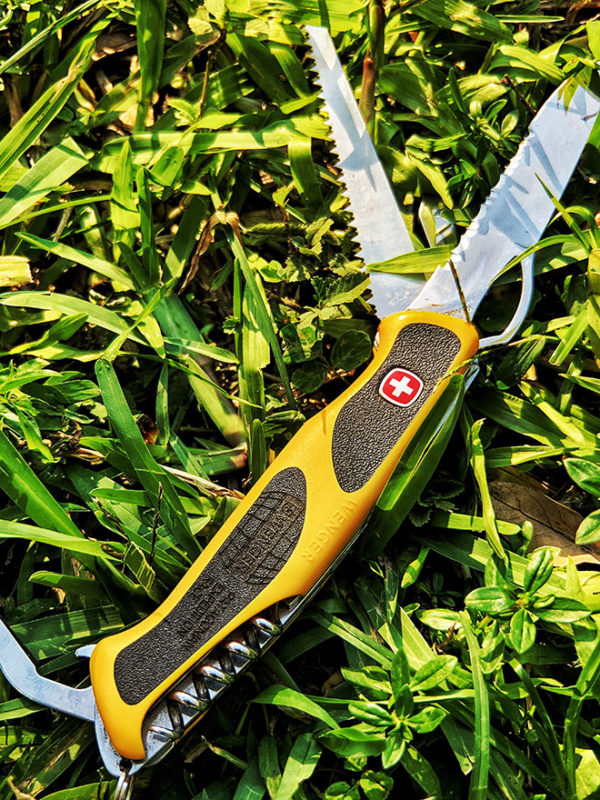
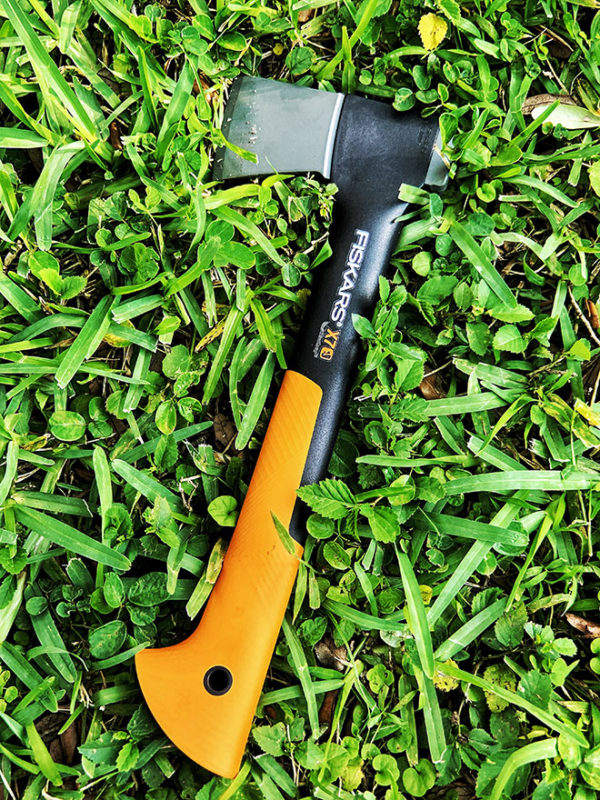
· Cut-resistant Gloves – Great for protection and safety, also having a little extra grip can be useful.
There are a few other items that you’ll want to consider in this category:
· Sabre Pepper Spray – In times of disaster, people will be desperate, and this is a non-lethal way of protecting yourself.
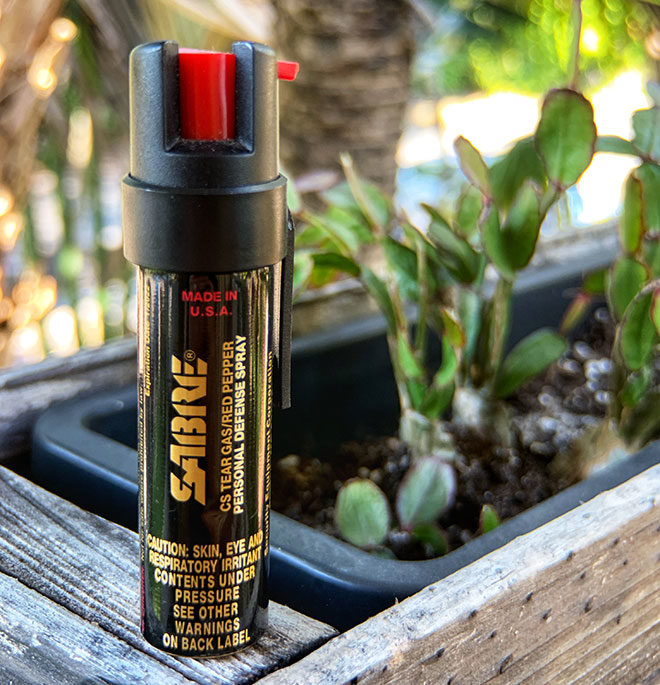
· N95 Face Masks – Useful in protecting yourself from dust and other airborne particles.
· Sunscreen
· Bug spray
% of Pack: 5%
Clothing
Clothing is going to be settled in large part by where you are, and where you plan to go. A general rule of thumb is to avoid cotton at all costs. Most survivalists will tell you that cotton is the “death cloth.” In terms of natural fibers, wool is your best bet as it can maintain warmth even when wet. Nowadays, though, there are a plethora of synthetic fibers on the market, with new combinations coming out all the time; read reviews and plan ahead.
My change of clothes includes:
· ExOfficio Give-N-Go Underwear – Light, odor resistant, wicking, comfortable.
· Wool Socks
· Coalatree Trailhead Pants – Water repellent, comfortable, adaptable.
· Wool Beanie
· Warm Gloves
· Cotopaxi Fuego Jacket
Even if you’re in warmer weather you’ll want to pack these essentials; night hours can be cold and dewy, making exposure deadly.
% of Pack: 15%
Hygiene
No matter the situation, hygiene can be one of the most important yet overlooked aspects of survival; not only for the sake and senses of those with you but for your own health and safety. Travel size portions of your typical everyday items are readily available. If possible, steer clear of heavily perfumed soaps and lotions as these can attract bugs and ward off smell-sensitive prey. Let’s go over a brief list of items to consider:
· Bath soap
· Deodorant
· Toothpaste
· Toothbrush
· Napkins
· Shampoo
· Toilet Paper
· Wet-Naps
· Hand Sanitizer
% of Pack: 5%
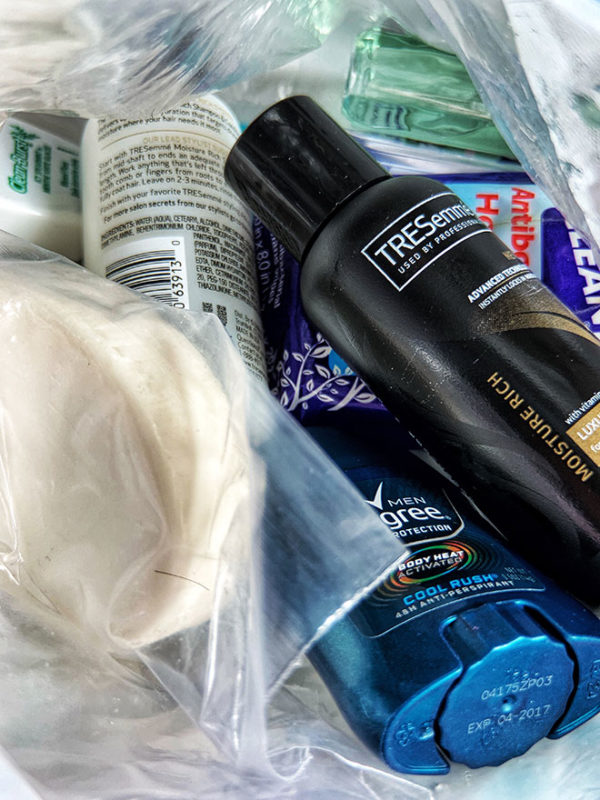
Medical
During a disaster, or running from one, not everything will go as planned; you can get cut, scraped, or injured. There is an array of different first aid kits on the market with varying levels of complexity and quality. Complexity can depend on your skill level and what you’re familiar with, while quality should never be compromised. I have the luxury of being married to a nurse, so my kit is decked out. A practical suggestion would be to speak to a medical professional and become familiar with the techniques and uses for different scenarios and items. There are also books and hours of YouTube videos, although nothing beats hands-on training.
Like the go bags themselves, first aid kits come pre-made, or you can put them together piecemeal. MyMedic offers fully loaded packages that meet all sorts of requirements. Also, Amazon has tons of different kits of all shapes and complexities. For me, I purchased a high-quality pre-made kit on Amazon, that was then supplemented by my wife’s expertise.
% of Pack: 10%
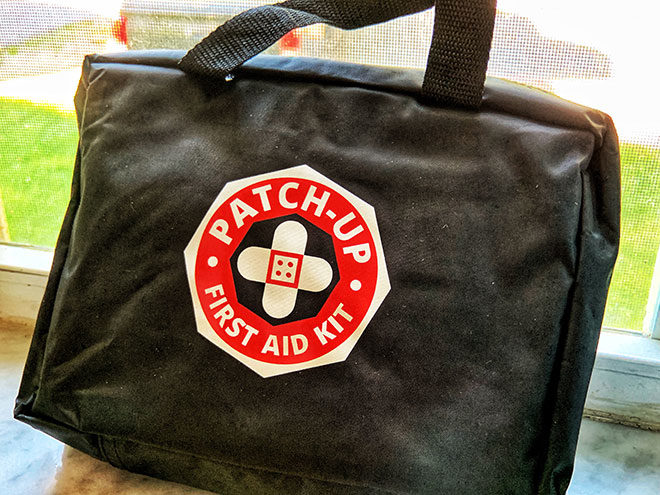
Sleep
Once the chaos subsides, you’ll need to get some sleep. The market has produced astonishingly light and packable blankets, sleeping mats, sleeping bags, and travel pillows. You’ll want to stay off the bare ground, so at the very least, you should aim for a mat and a blanket, although a sleeping bag would be better. On the flip side, a sleeping bag is more cumbersome, and will most likely be strapped to the outside of your bag, making you a target. Another route is to take a packable hammock; they’re light, will keep you off the ground, and don’t take up much space.
If I can take my car, I’ll bring a two-person sleeping bag.
My current setup consists of:
· Cotopaxi Kusa Blanket
· Outdoorsman Lab Inflatable Sleeping Pad
· Trekology Ultralight Sleeping Pillow
· Coalatree Loafer Packable Hammock
% of Pack: 15%
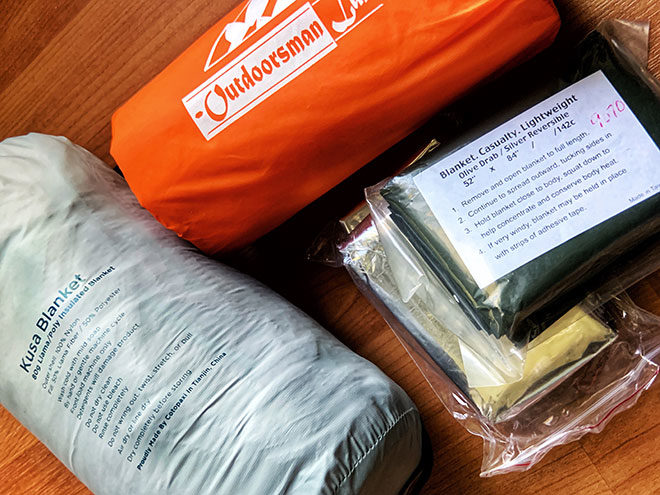
Miscellaneous Items
We’ve gone over the essentials, but within those larger categories, there are smaller items that although not necessary, are a boon to have. Below is a list of gear and their rationale:
· Packable Towel
· DBPower 18,000mAh Battery Pack
· AA, AAA, C, and D batteries – Enough to power all my gear once over.
· Trash Bags – Can be packed small and tight, and with loads of uses, it’s worth taking a couple.
· Ziplock Bags – They’re watertight, and can be used for all sorts of things. They take up no space as I primarily use them as a way to compartmentalize all my gear; like packing cubes.
· Long-lasting Candles
· Moobibear LED Lantern – Light, cheap and crazy bright with hours of use on just a couple of AA batteries.
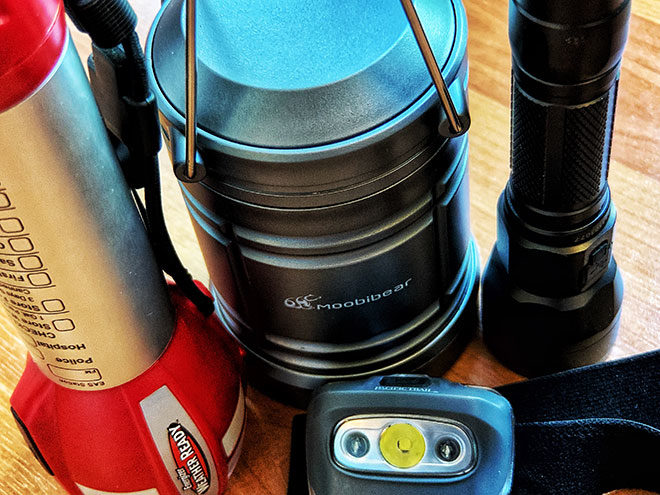
· JETBeam Tactical LED Flashlight – Small, bright, and rugged, with a USB rechargeable battery.
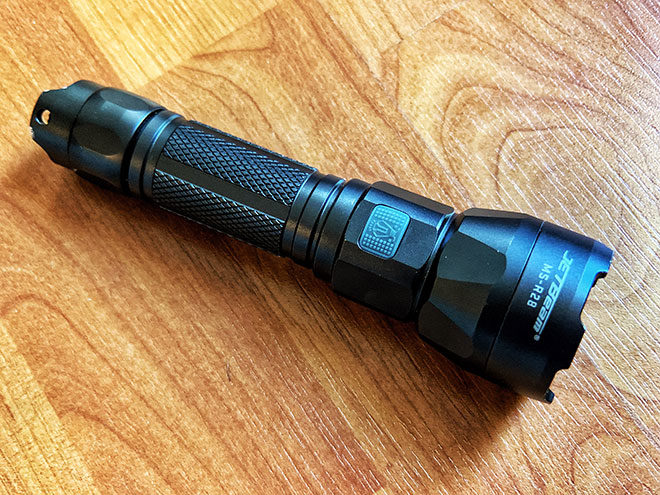
· Black Diamond Headlamp – Sometimes you need light and both hands.
· Paracord – I keep a few hundred feet with me.
· Fishing Yo-yo & Lures – I am not a hunter, and the Everglades are inhospitable, so I am going to the coast to fish.
· Survival Manual – Keep it to the basics.
· Trauma Blanket – Packs down small and can be used to keep you warm in a pinch.
· Bandanas – Helps to minimize sun exposure.
· Coalatree MTN2CTY Stainless Steel Cup
· Notebook – Keep notes, leave notes behind, can also be therapeutic.
· Maps – If cell phones die, you’ll know where to go
· Compass – Coupled with a map, and know-how, can guide you in the right direction. I would suggest practicing how to use one beforehand.
· Bungee Cords – Incredibly useful for putting up a makeshift shelter, hanging things up, or securing items.
· Duct Tape – It’s the solution to nearly everything.
% of Pack: 15%
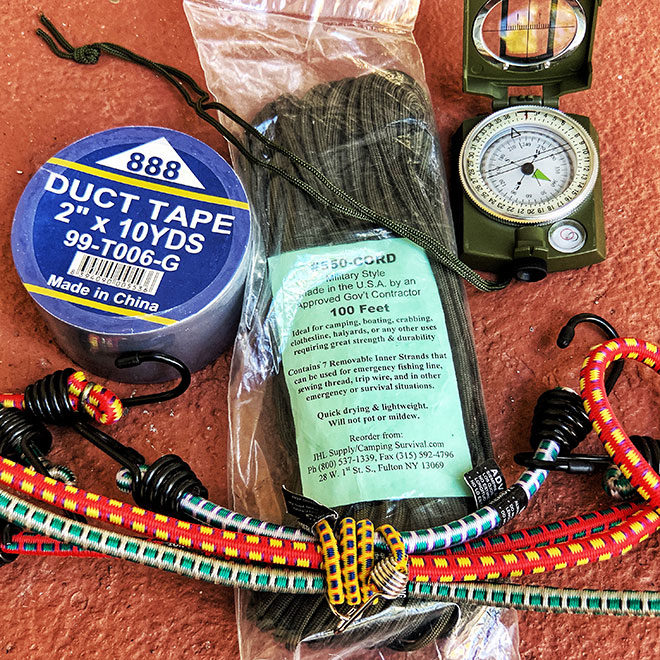
Conclusion
These choices and recommendations are born of about ten years of slowly evolving and tweaking my go bag to not only be lightweight and effective but reduce the outdoorsman/survivalist aesthetic to where I just look like a scrub with some super basic camping gear. I am definitely not the definitive voice in this discussion, but if you’re new to this arena, or have been at this a long time, the details found in this guide may assist you in creating and tweaking a truly great survival carry.
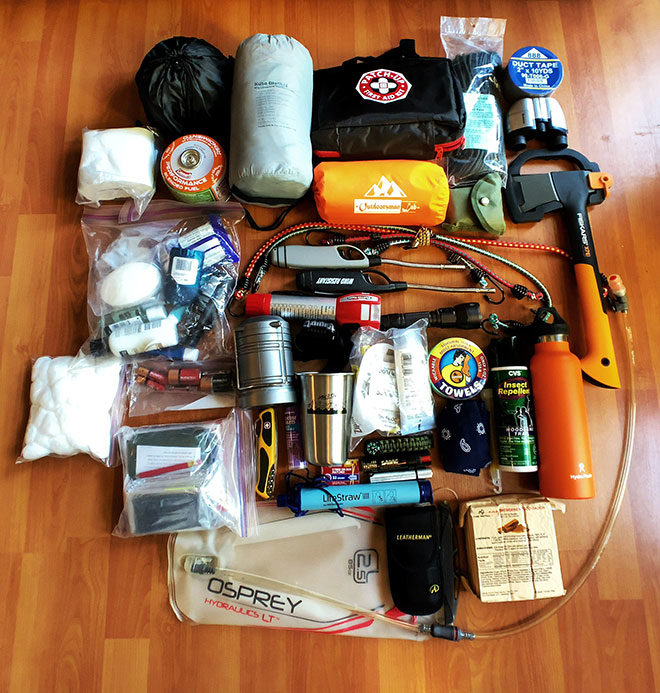
This article was written by new contributor, Jovanni Bello. Renaissance man, adventurer and cell phone photographer.





 Carry Awards
Carry Awards Insights
Insights Liking
Liking Projects
Projects Interviews
Interviews
